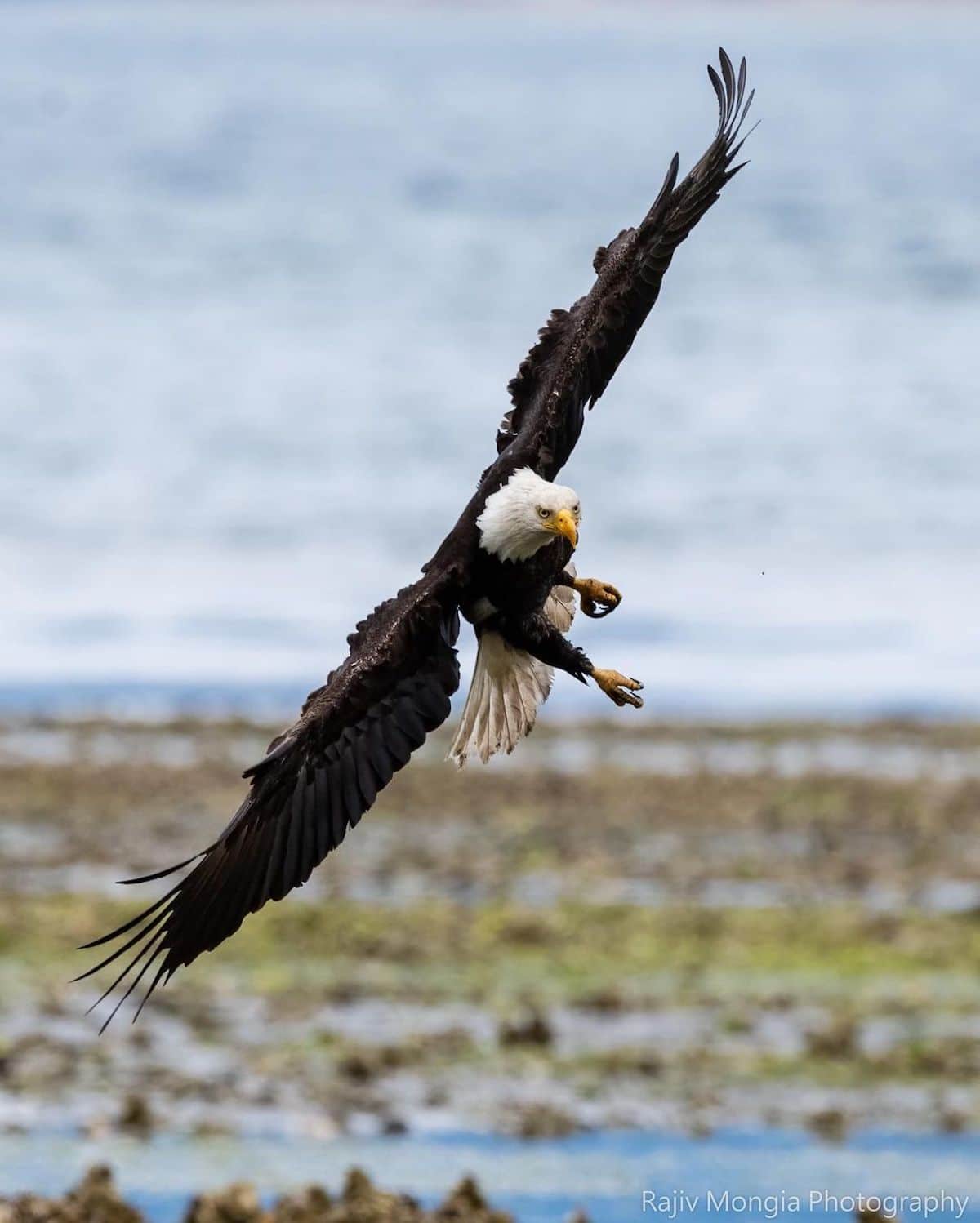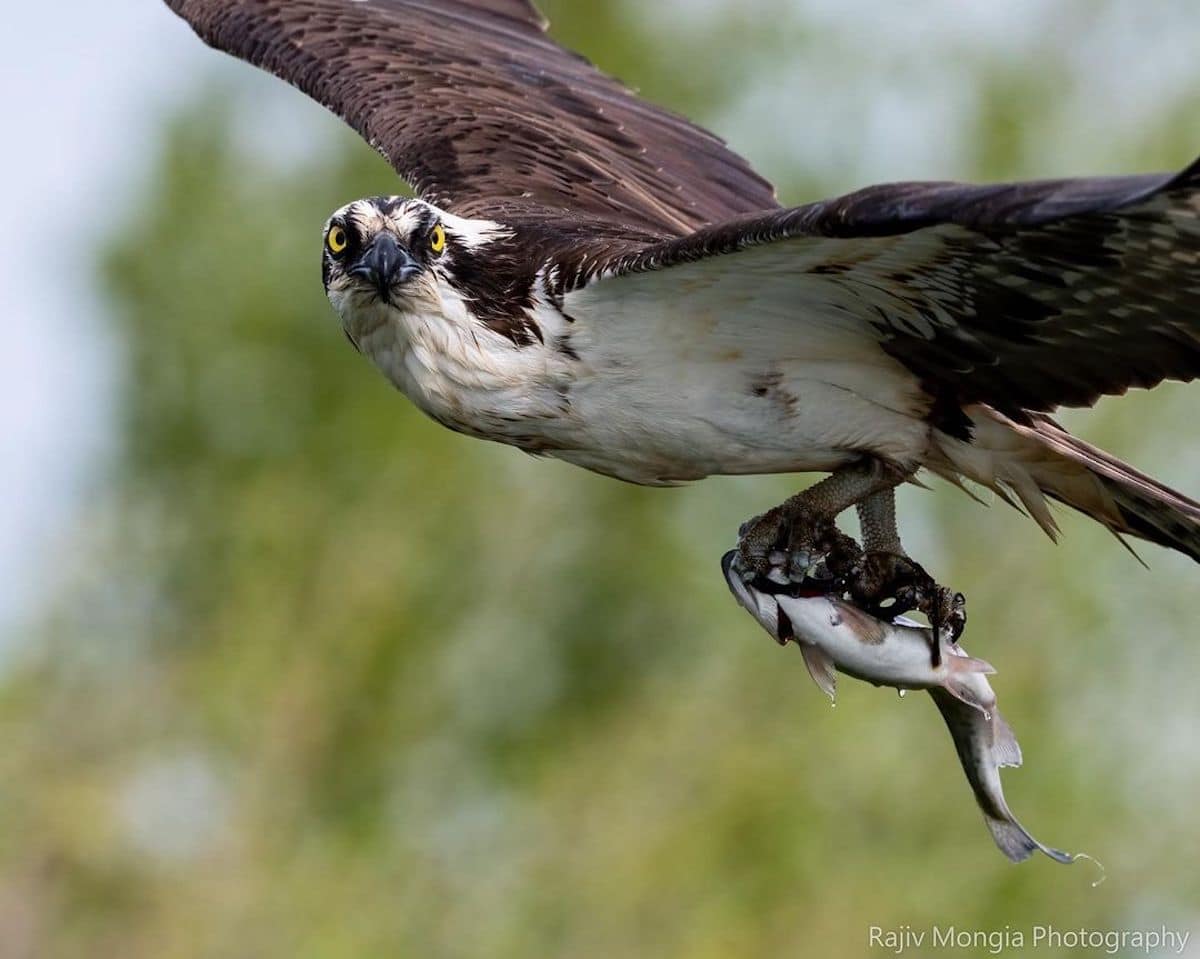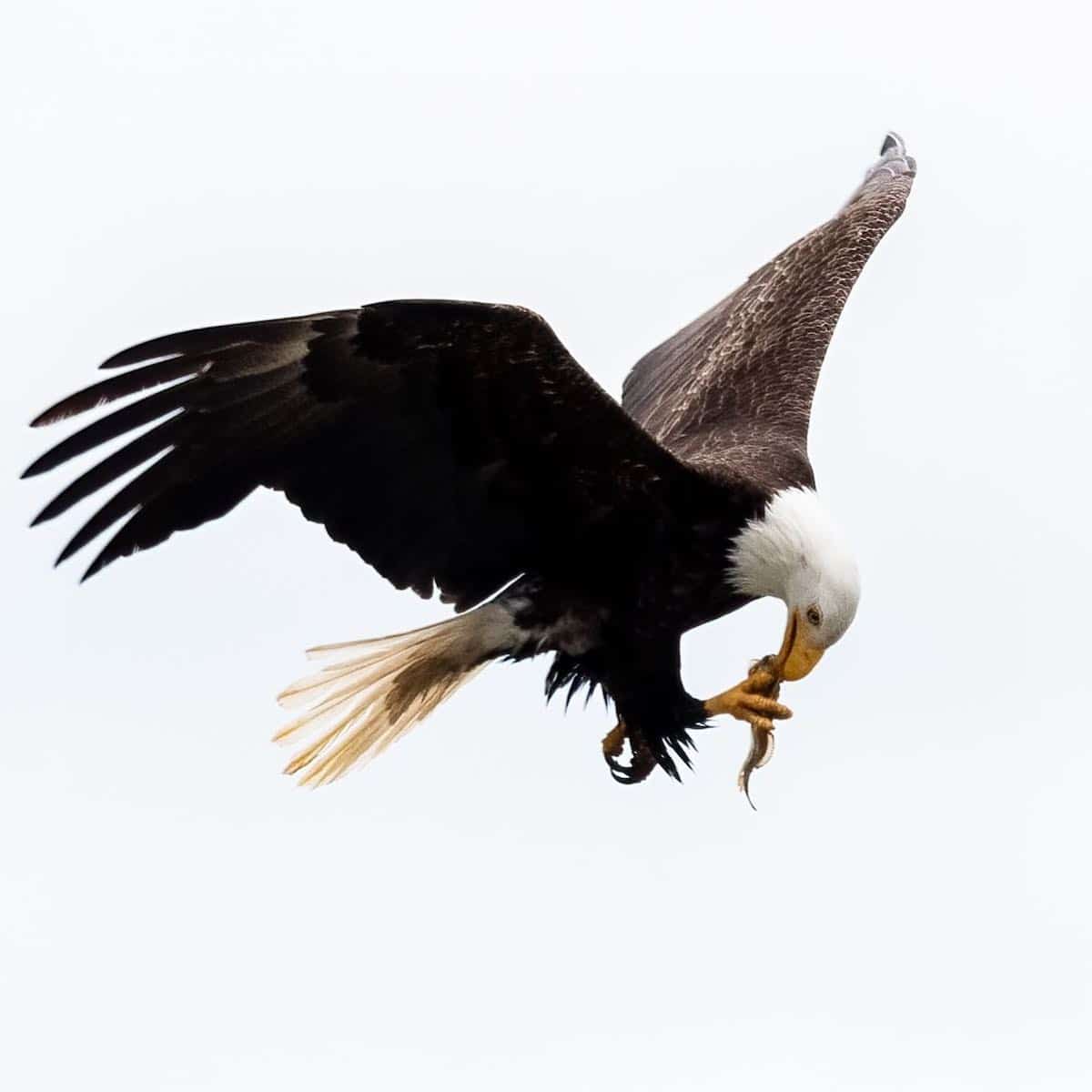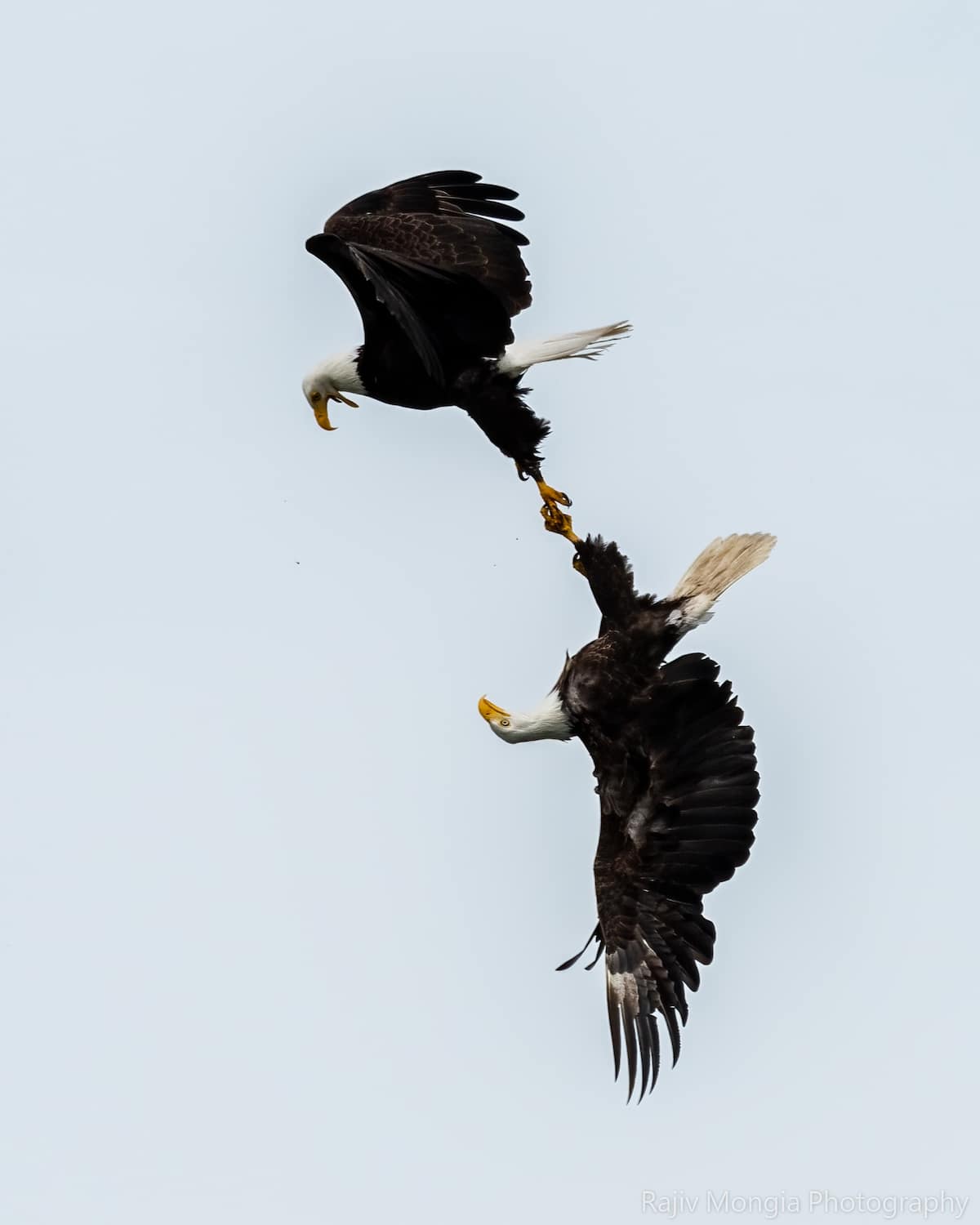
There are some pictures that a photographer might wait years to capture. This was the case for Portland-based enthusiast Rajiv Mongia as he patiently waited to snap an amazing shot of two eagles with their talons interlocked in mid-air. One of the birds is flying upright while the other winged creature is mirrored, turned upside down. It looks as though the upturned bird is about to tumble out of the sky, if not for being held there by the other one.
Mongia began photographing wildlife after a trip to Patagonia in 2017. “I found it amazing to try to understand the behavior of wildlife, to try to catch that special ‘moment’ that one sees in the photographs of amazing professionals,” he shares with My Modern Met. “I started to practice at that point and quickly learned how much planning, patience, knowing the technical skills (light triangle, etc), and sheer luck is involved in getting the ‘right shot.’”
The pandemic propelled Mongia’s practice forward. He used photography as a way to get out of the house—to take some photos and recharge. In doing so, he began thinking about some specific shots he wanted to capture.
“One of those was the behavior of raptors such as bald eagles,” Mongia says. “In the Pacific NW, it is amazing to see how bald eagles have once again become common in the skies. I have gotten a number of wonderful pictures of eagles perched and even caught some nice photos of eagles grabbing ducks/sea birds, but I have never really been able to get nice pictures of them interacting with each other.” He had seen photos (from other photographers) of the eagles flying as they locked talons, but he wasn’t sure when or where he’d be able to snap a picture like that.
Mongia finally had the opportunity for that famed shot. “I saw a series of workshops from an amazing photographer, Mark Smith,” he recalls. “[Mark] has the most epic shots of eagles and I was hoping I could learn skills by taking his workshop in Washington. [He] gave incredible advice on how the eagles had been behaving in the last few days and what to look for when there is about to be some nice action.”
After working on some technical aspects with Smith, Mongia spent about four hours shooting pictures. “The scene was crazy at that location— there were 20–30 eagles, 10–20 great blue herons, some crows, and some gulls—all flying around trying to get the fish at this spot. The action was constant—and there we all were at the workshop, firing away. Things were happening so fast that you don’t know for sure what you caught and you don’t have time to review your images as you go since every time you looked up there was another eagle flying in from a different direction.”
Moniga took about 5,000 pictures that day, and he wasn’t sure how they would turn out. “I get home that evening and start doing my rapid pre-sort of photos to see if I indeed got something different,” he shares. “There was one part where one eagle grabbed another and tossed it into the water. DANG, missed that one. Another where there was action between two eagles—UGH, missed focus on that one.”
But then came that magic moment. “I run across this picture that I posted,” he continues. “I had to blink my eyes for a second. Yes, it was a bit far away (I had to crop quite a bit), but the action was perfect—two eagles locked talon and talon, each out-stretched. One with its mouth open in a cry and the other focused on the first one.”
It was the shot he had been pining over for years, and with his passion for bird photography, it likely won’t be his last.
Rajiv Mongia has a passion for bird photography.

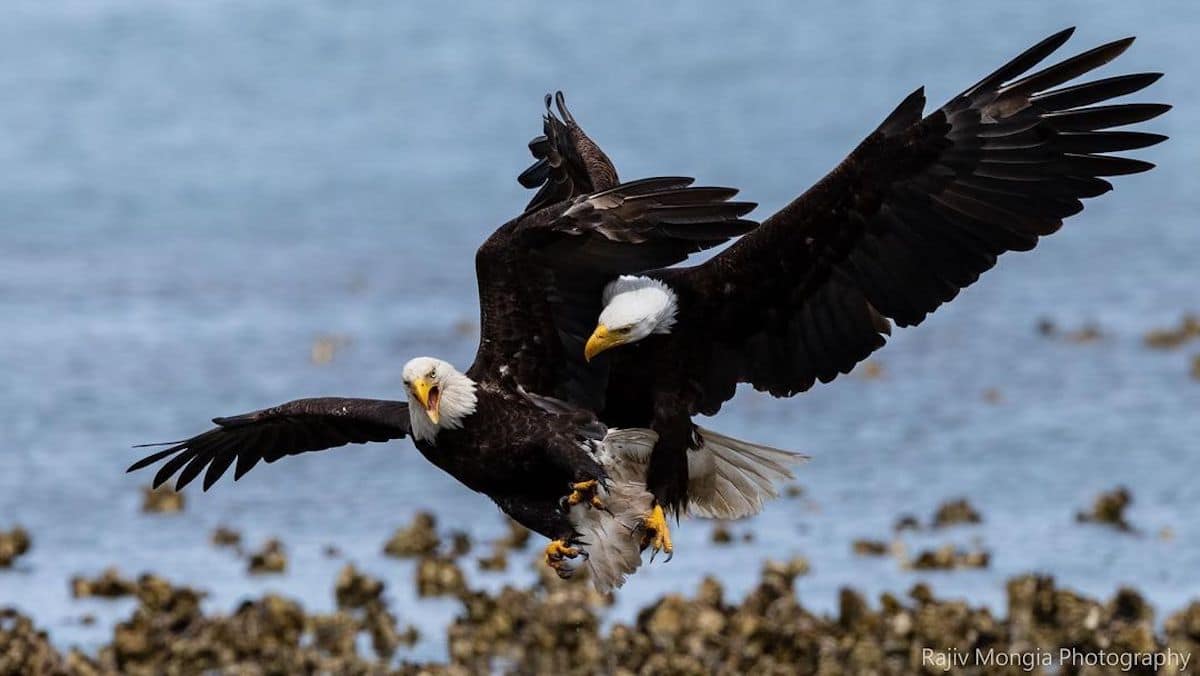
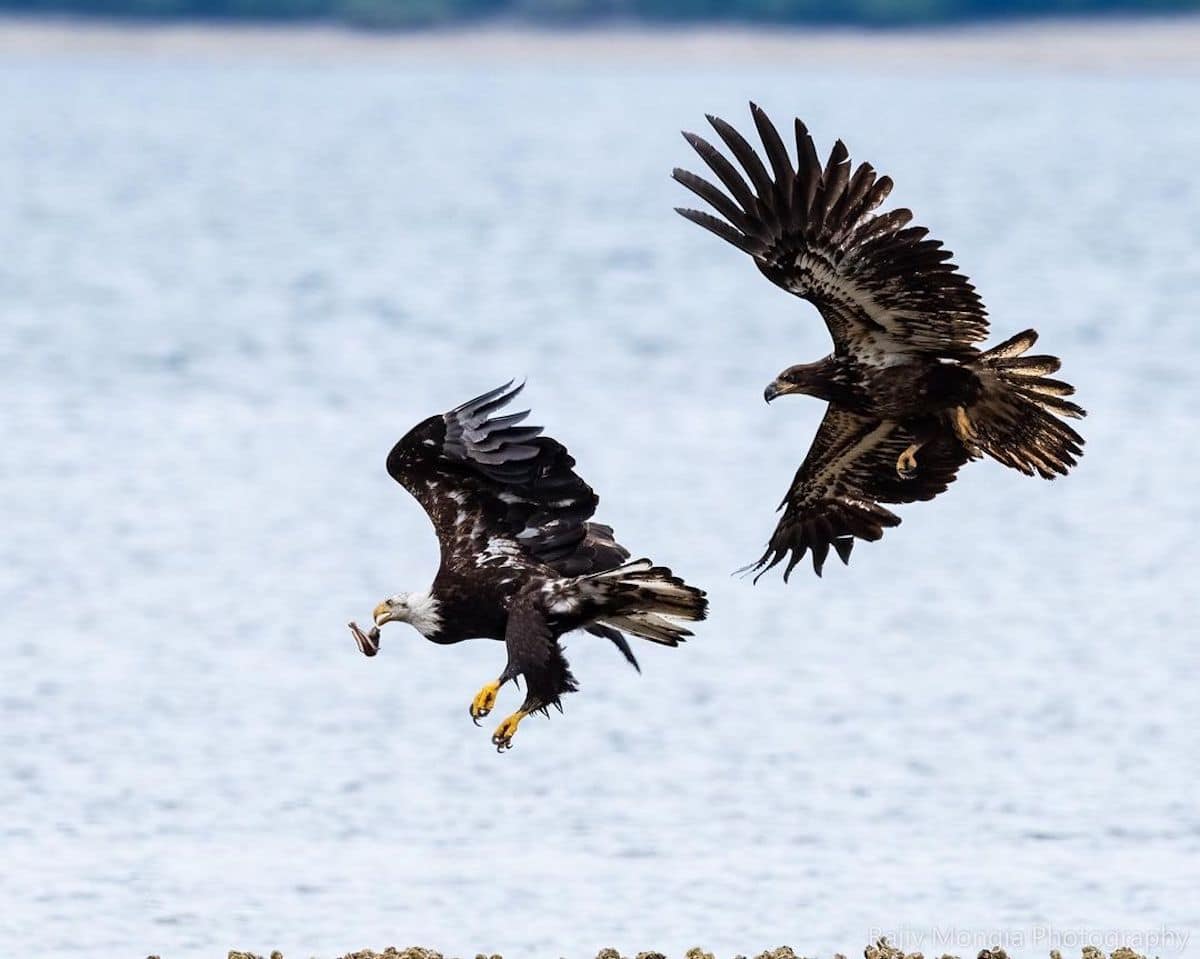
While waiting years for the perfect shot of two bald eagles interlocked in mid-air, he’s snapped many more photos of ferocious birds.
